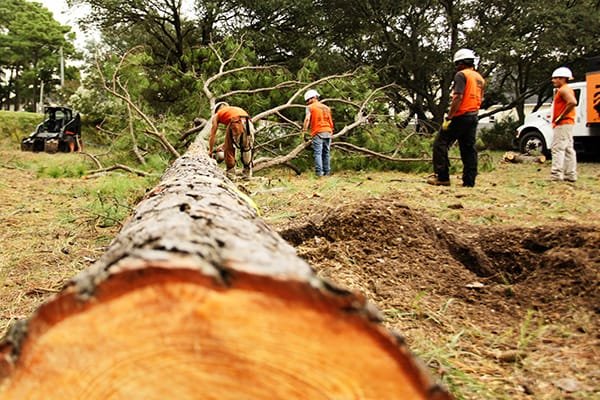[ad_1]
When it comes to tree removal, there are several important factors that need to be considered. These factors include the size of the tree, its location, and whether it is close to power lines or other structures. These factors will impact the cost of the tree removal. The process of tree removal can also be dangerous if the tree is near structures or power lines, so it is important to hire an expert to remove it safely.
Cost of tree removal
When you have a tree that has to be removed, the cost can quickly rise. Emergency tree removal costs can range from $450 to $5,000. However, some homeowners may be covered by their insurance policy. Make sure you check your policy before you pay for the tree removal. Most policies will cover the cost of tree removal if it falls on your home, though you may have to pay a deductible for this service.
The price of tree removal varies depending on how dangerous the tree is. If the tree is close to power lines or telephone poles, the utility company may be willing to cover the cost. The cost also varies depending on the size of the tree and the type of tree removal company you hire. You can get several quotes to compare the costs and make an informed decision.
Criteria for removing a grand tree
A grand tree meets the criteria for protected trees and requires special care to remain in good condition. In the state of Florida, this means that the trunk diameter of a grand tree should be thirty-four inches or greater. These trees are protected by law, and any damage to them must be addressed.
Before a grand tree can be removed, a permit must be obtained from the local zoning administrator. The tree must be designated in a tree protection plan or landscape plan. A permit is required if the tree will affect a structure. When evaluating a tree removal request, the zoning administrator must consider several factors, including public safety, tree health, and species.
Requirements for removing a tree
In many cities, removing a tree requires a permit. This permit is displayed before tree removal begins, and the contractor must have the permit on site before beginning the work. Certain cities have special regulations regarding tree removal, and you should contact the city office for specific information. You should also consult the Village arborist to determine what kind of permit you need.
The Wyoming Forestry Division has published a tree owner’s manual that provides general information about tree removal and replacement. However, this manual does not cover special state or Cheyenne municipal code requirements.
Time of year to remove a tree
If you are planning to remove a tree from your property, you need to know the right time of year. Winter and early spring are best times to do so, as leaves have already fallen to the ground and branches are free of additional weight. This makes them easier to remove. Plus, the removal of the tree will leave less of a mess.
Generally speaking, February and March are the least expensive months to remove a tree, but you’ll need to consider the location of your tree. This is because the trees are bare of leaves, and it will be easier to cut them down. However, keep in mind that tree removal companies can get very busy in the late spring and summer, so it’s best to book early. Costs vary depending on the tree’s condition, its location, and the company doing the work.
Safety hazards
Tree removal and care can be dangerous jobs. According to the Census of Fatal Occupational Injuries, nearly 500 people die each year while performing these tasks. Thousands of others are injured. Injuries in the field of tree care and removal are often preventable with proper precautions. Tree care and removal professionals should wear protective gear.
Tree workers must be trained to identify and mitigate potential safety hazards on the job. Before beginning work, they must conduct a hazard briefing. They must analyze the hazards and decide on a plan of attack. They should also be on the lookout for animals and other hazards. They should also be aware of any signs of poison oak and ivy.
[ad_2]

